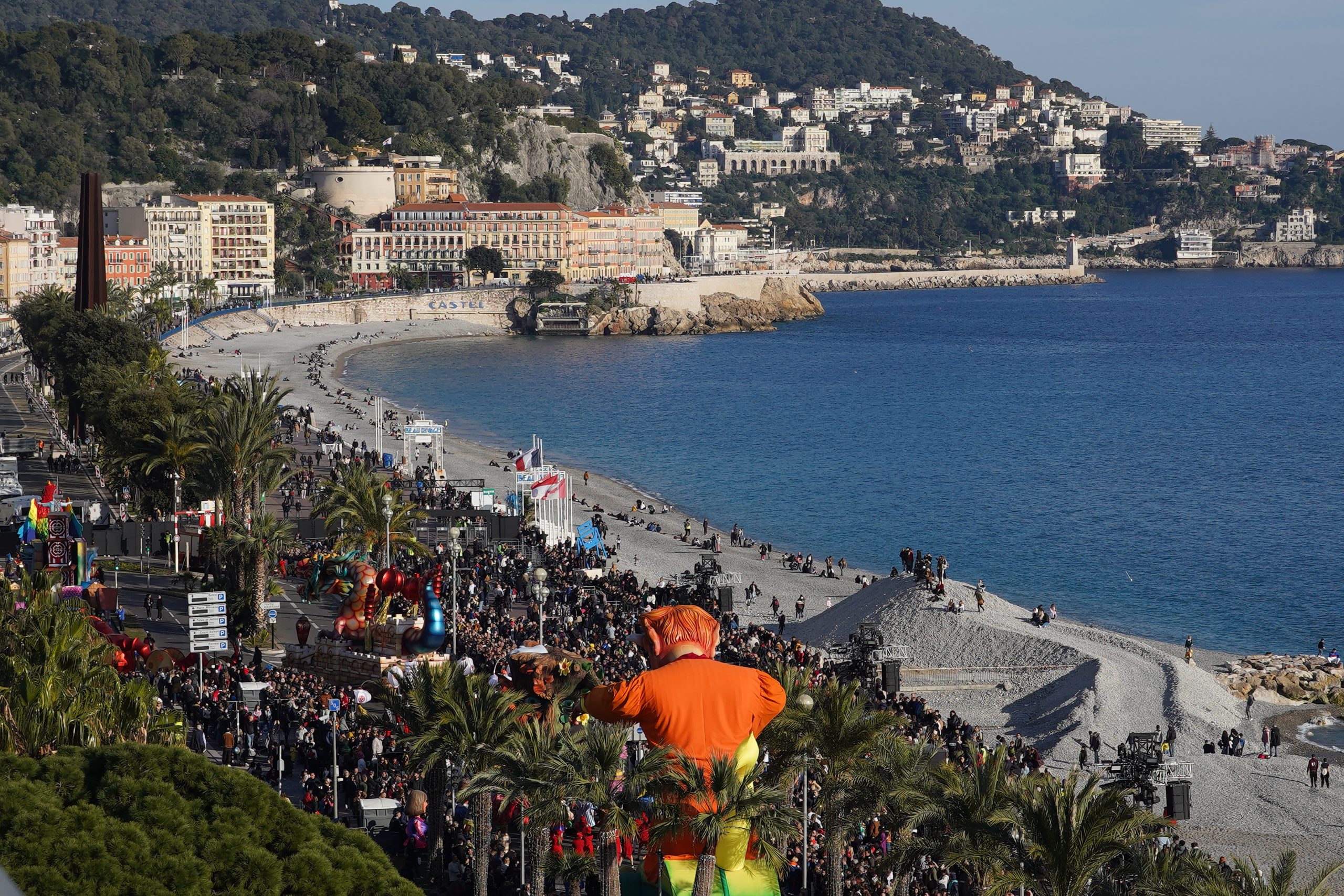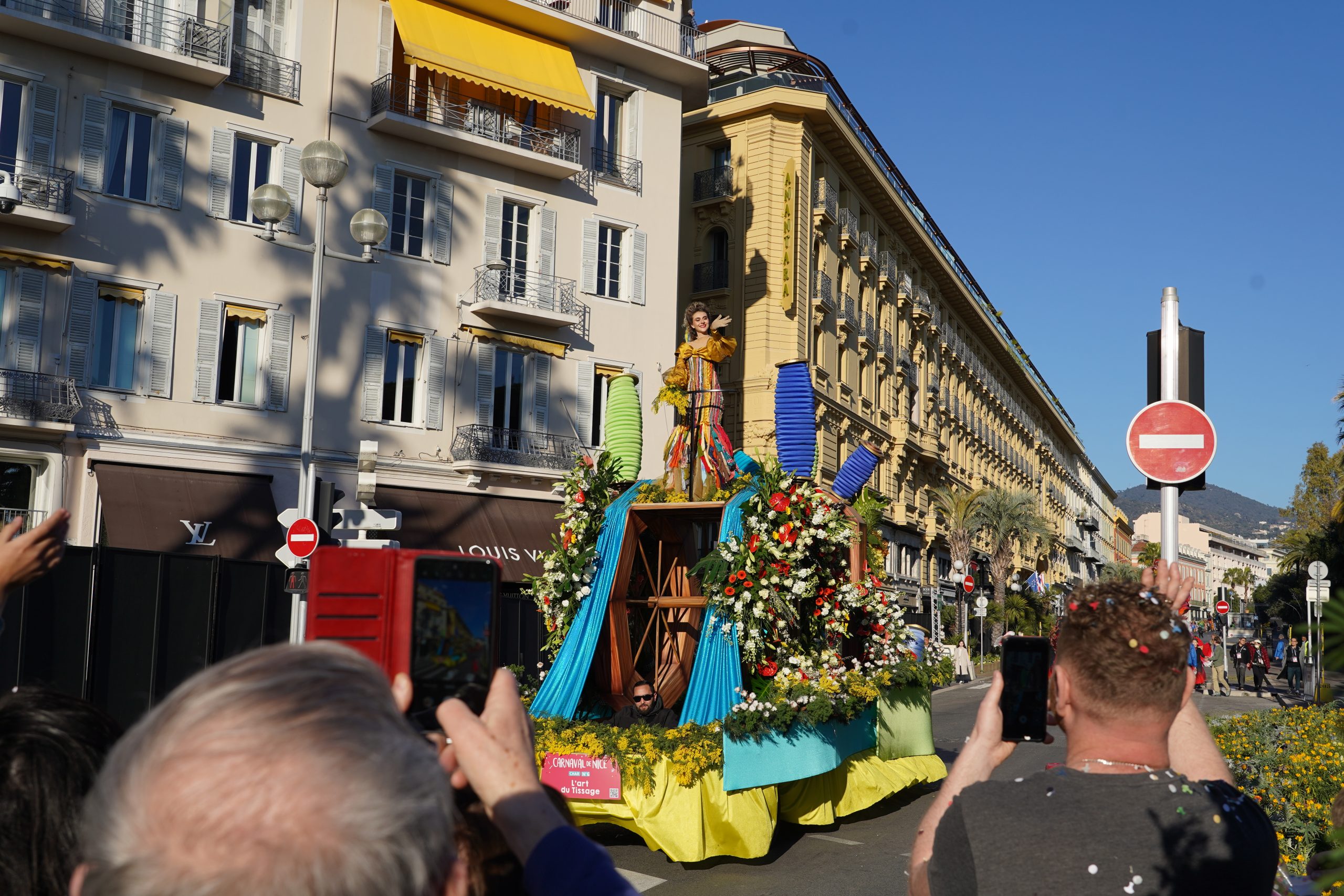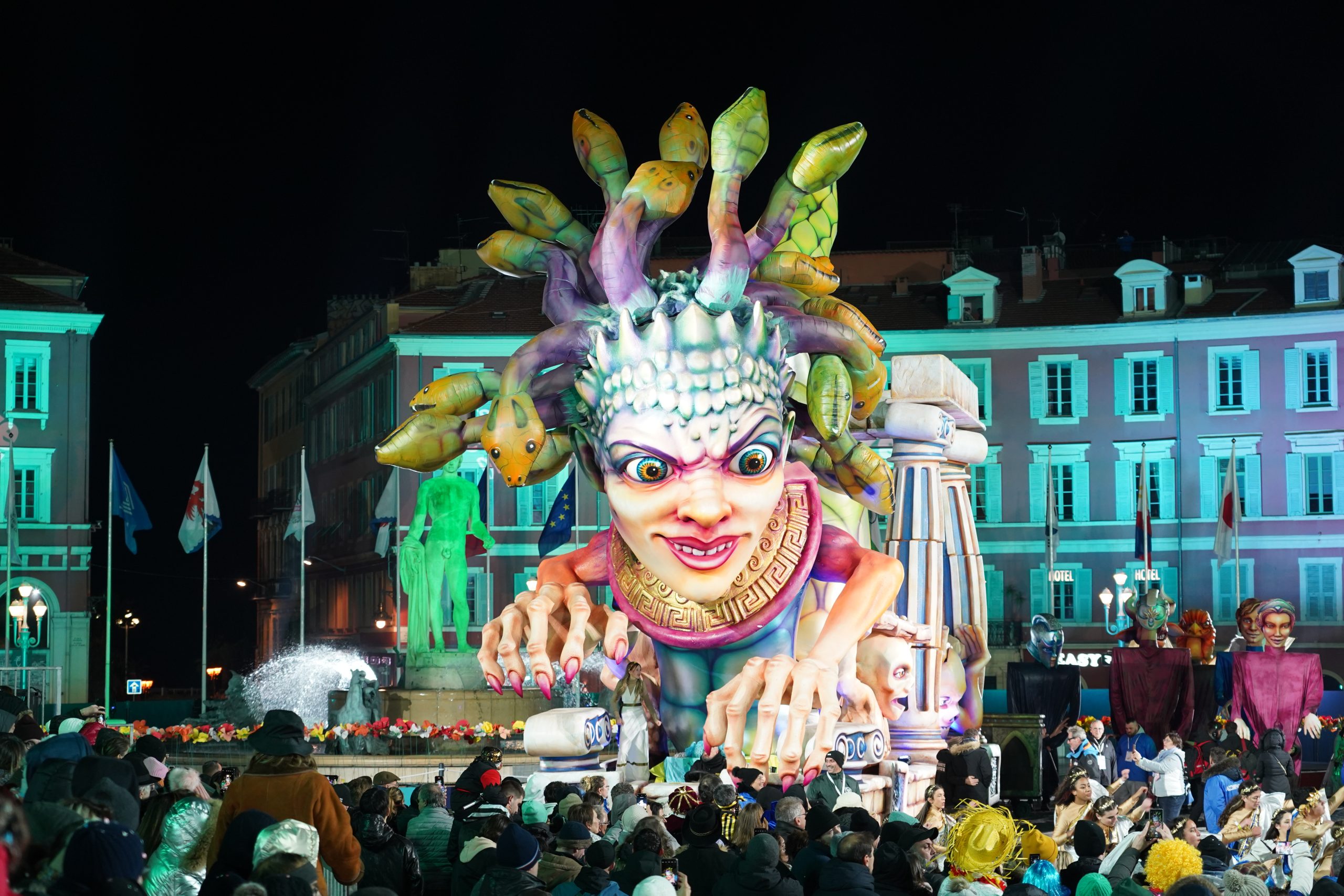
Carnaval de Nice
Carnaval de Nice is a popular carnival celebration held annually in Nice, France and a bucket list item. It is one of the largest and most famous carnivals in the world, rivaling Carnaval or Carnivals in Venice, Italy and Santa Cruz de Tenerife. Carnaval de Nice attracts thousands of visitors every year. The event takes place over two weeks, usually in February, and features a variety of colorful and elaborate floats, costumes, music, and dance performances.

The carnival takes place along the Promenade des Anglais, which is a famous seaside promenade in the city of Nice, France. During the carnival, the promenade is transformed into a lively and colorful parade route, with floats, dancers, and musicians entertaining the crowds. The parades take place both during the day and at night, and the illuminated floats against the backdrop of the sea create a truly magical atmosphere.
The Carnaval de Nice holds significant cultural and historical importance for the city of Nice and the wider region of the French Riviera.
First and foremost, it is a celebration of the city’s rich cultural heritage and traditions, and serves as a way for the local community to come together and mark the start of the spring season.

The carnival is a celebration of the local culture and traditions of Nice, and it features many local musicians, dancers, and other performers showcasing their talents.
Additionally, the Carnaval de Nice is a major tourist attraction and economic driver for the city, attracting thousands of visitors every year. The event generates significant revenue for local businesses, such as hotels, restaurants, and shops, and contributes to the local economy.
In terms of cultural significance, the carnival is known for its intricate masks and costumes, elaborate floats, and vibrant atmosphere, which showcase the creative talents of local artists and artisans. The event also features a variety of traditional music, dance, and performance styles, providing a window into the local culture and traditions of the region.
Overall, the Carnaval de Nice is an important event that showcases the history, culture, and traditions of the city and region, and serves as a symbol of the community’s vibrant and creative spirit.
Flower Parade at Nice Carnaval
The Flower Parade is known for its colorful and elaborate floats, which are decorated with flowers, feathers, and other natural materials. The floats, which can be up to 15 meters tall, are typically created by local florists and are designed to depict a wide range of themes, including historical events, fairy tales, and cultural celebrations. Thousands of people come to watch the parade each year, making it one of the most popular events at the Nice Carnival. The Flower Parade is usually held on the first Sunday of the Carnival and is a major highlight of the two-week-long celebration.

The tradition of the flower parade dates back to the late 19th century when local residents began throwing flowers at each other during the carnival. This playful activity eventually evolved into a formal parade, with floats adorned with flowers and participants throwing flowers at the crowds.
Flowers are thrown from the floats during the Flower Parade at the Nice Carnival as a way to symbolize joy and good cheer. This tradition dates back many years and is seen as an expression of celebration and festive spirit. As the floats move through the streets of Nice, participants on the floats will throw handfuls of fresh flowers into the crowd, creating a shower of petals and a burst of color. The flower-throwing tradition is a way for participants on the floats to share the beauty and happiness of the parade with the spectators and to create a memorable experience for all those who attend. The flower-throwing is also seen as a symbol of generosity, as the participants are giving something of themselves to others in order to spread happiness and good will.
The flowers that are thrown are typically a mix of brightly colored blooms, including roses, lilies, chrysanthemums, and dahlias. These flowers are selected for their vibrant colors and long-lasting blooms, as they need to hold up during the parade and last long enough to be enjoyed by the spectators. The flowers are usually carefully arranged in large bunches or woven into garlands, which are then thrown from the floats. Some floats may also use flower petals to create a shower of color, which can be especially striking as they fall from the sky and blanket the streets in a rainbow of hues. Regardless of the type of flower used, the goal is to create a festive and memorable atmosphere, and the use of flowers is an essential part of this tradition.
History of Carnaval de Nice
The Carnaval de Nice has a long and rich history that dates back over 150 years. The first official carnival in Nice was held in 1873, and since then it has become an important tradition for the city and its residents.
In the early years, the carnival was a celebration of the arrival of spring and was marked by the use of masks and costumes, as well as food and drink. Over time, it has evolved into a larger and more elaborate event, with elaborate floats and performances. During World War II, the carnival was suspended, but it was revived in the 1950s and has been held every year since.
Today, the Carnaval de Nice is one of the most famous and popular carnivals in the world, attracting visitors from all over the globe. It is known for its vibrant atmosphere, intricate masks and costumes, and elaborate floats, and it continues to be an important cultural event in Nice and the wider region of the French Riviera.
If you’re in the area during the carnival, it’s definitely worth checking out!

Medusa is a common theme at the Nice Carnaval. One possible reason for the use of the Medusa symbol at the Nice Carnaval is to represent the idea of transformation and renewal. The carnival is a celebration of spring and new beginnings, and the Medusa symbol may represent the power to transform and create something new out of chaos.
